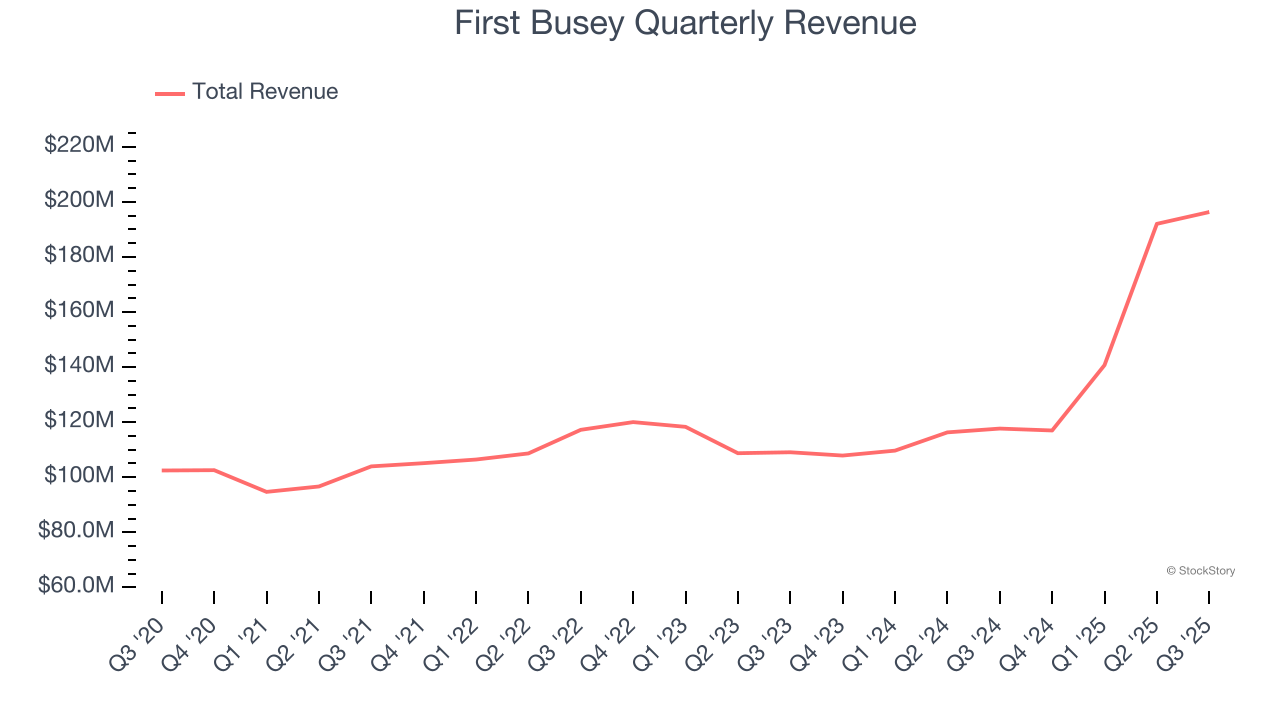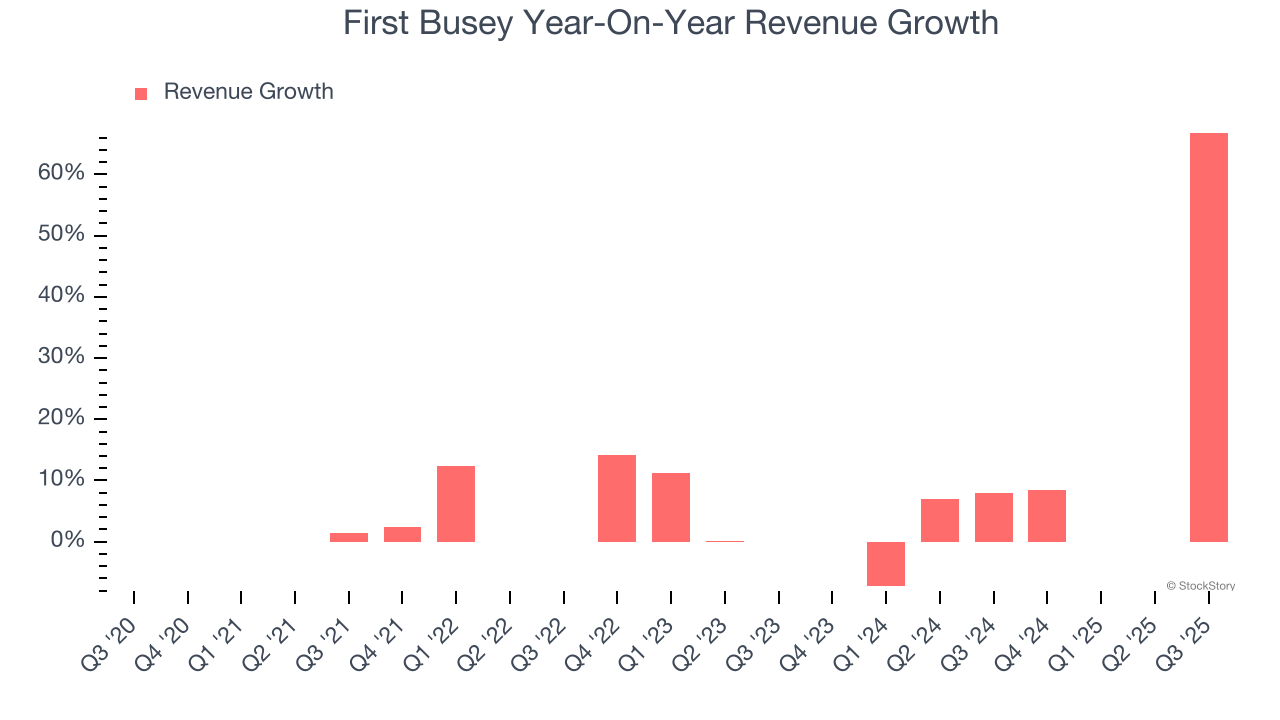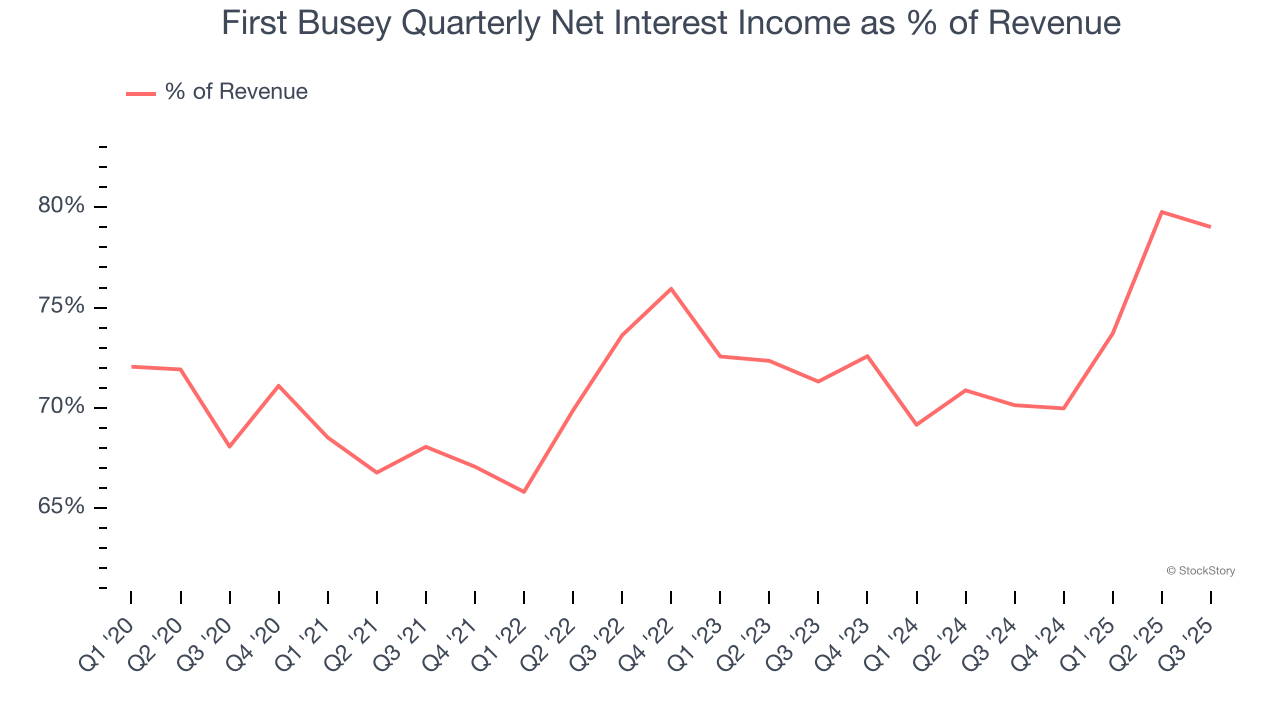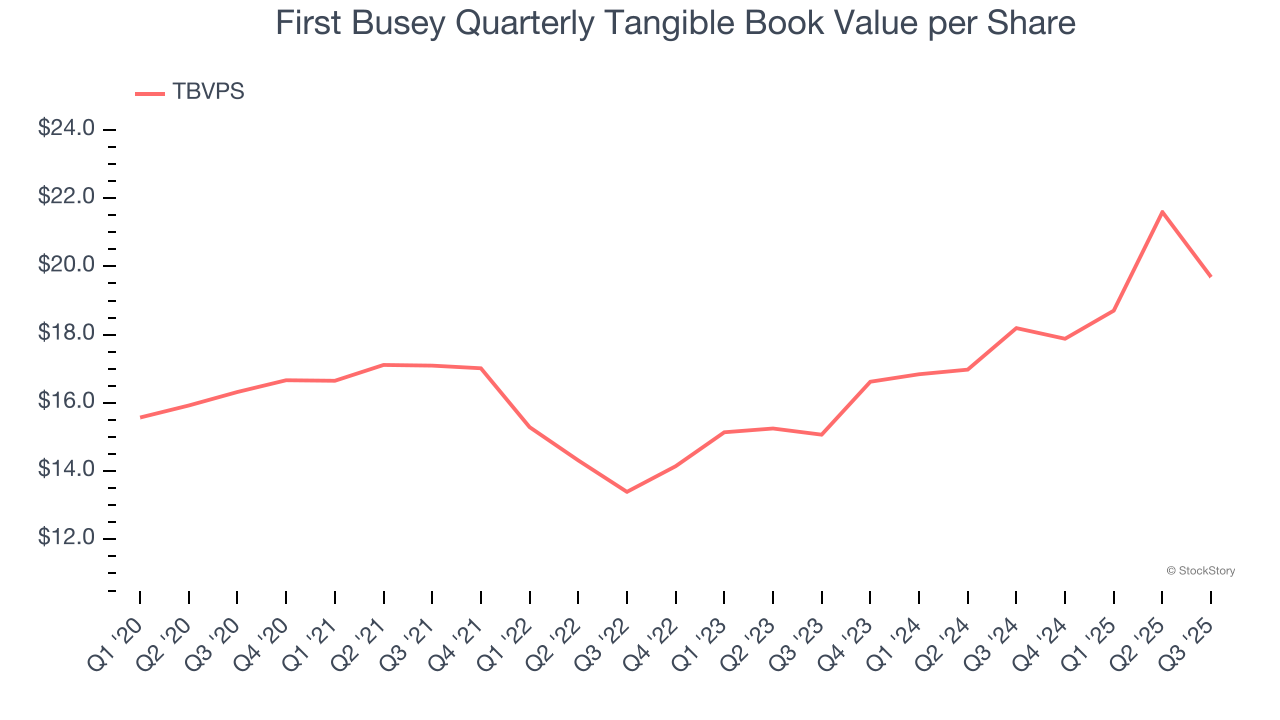
Regional banking company First Busey (NASDAQ: BUSE) met Wall Street’s revenue expectations in Q3 CY2025, with sales up 66.8% year on year to $196.3 million. Its non-GAAP profit of $0.64 per share was 2.5% above analysts’ consensus estimates.
Is now the time to buy First Busey? Find out by accessing our full research report, it’s free for active Edge members.
First Busey (BUSE) Q3 CY2025 Highlights:
- Net Interest Income: $155.1 million vs analyst estimates of $155.9 million (88% year-on-year growth, in line)
- Net Interest Margin: 3.6% vs analyst estimates of 3.5% (5 basis point beat)
- Revenue: $196.3 million vs analyst estimates of $195.6 million (66.8% year-on-year growth, in line)
- Efficiency Ratio: 58.5% vs analyst estimates of 56.2% (230.3 basis point miss)
- Adjusted EPS: $0.64 vs analyst estimates of $0.62 (2.5% beat)
- Tangible Book Value per Share: $19.69 vs analyst estimates of $19.66 (8.2% year-on-year growth, in line)
- Market Capitalization: $2.07 billion
Company Overview
Tracing its roots back to 1868 during America's post-Civil War reconstruction era, First Busey (NASDAQ: BUSE) is a bank holding company that provides commercial and retail banking, wealth management, and payment technology solutions across Illinois, Missouri, Florida, and Indiana.
Sales Growth
Two primary revenue streams drive bank earnings. While net interest income, which is earned by charging higher rates on loans than paid on deposits, forms the foundation, fee-based services across banking, credit, wealth management, and trading operations provide additional income. Over the last five years, First Busey grew its revenue at an impressive 10.1% compounded annual growth rate. Its growth beat the average banking company and shows its offerings resonate with customers.

Long-term growth is the most important, but within financials, a half-decade historical view may miss recent interest rate changes and market returns. First Busey’s annualized revenue growth of 19% over the last two years is above its five-year trend, suggesting its demand was strong and recently accelerated.  Note: Quarters not shown were determined to be outliers, impacted by outsized investment gains/losses that are not indicative of the recurring fundamentals of the business.
Note: Quarters not shown were determined to be outliers, impacted by outsized investment gains/losses that are not indicative of the recurring fundamentals of the business.
This quarter, First Busey’s year-on-year revenue growth of 66.8% was magnificent, and its $196.3 million of revenue was in line with Wall Street’s estimates.
Net interest income made up 71.4% of the company’s total revenue during the last five years, meaning lending operations are First Busey’s largest source of revenue.

While banks generate revenue from multiple sources, investors view net interest income as the cornerstone - its predictable, recurring characteristics stand in sharp contrast to the volatility of non-interest income.
Software is eating the world and there is virtually no industry left that has been untouched by it. That drives increasing demand for tools helping software developers do their jobs, whether it be monitoring critical cloud infrastructure, integrating audio and video functionality, or ensuring smooth content streaming. Click here to access a free report on our 3 favorite stocks to play this generational megatrend.
Tangible Book Value Per Share (TBVPS)
Banks are balance sheet-driven businesses because they generate earnings primarily through borrowing and lending. They’re also valued based on their balance sheet strength and ability to compound book value (another name for shareholders’ equity) over time.
This is why we consider tangible book value per share (TBVPS) the most important metric to track for banks. TBVPS represents the real, liquid net worth per share of a bank, excluding intangible assets that have debatable value upon liquidation. On the other hand, EPS is often distorted by mergers and flexible loan loss accounting. TBVPS provides clearer performance insights.
First Busey’s TBVPS grew at a tepid 3.8% annual clip over the last five years. However, TBVPS growth has accelerated recently, growing by 14.3% annually over the last two years from $15.07 to $19.69 per share.

Over the next 12 months, Consensus estimates call for First Busey’s TBVPS to grow by 10% to $21.67, solid growth rate.
Key Takeaways from First Busey’s Q3 Results
Net interest income, revenue, and book value per share were all in line with Wall Street’s estimates. EPS did manage to beat, tough. Overall, this quarter was without many surprises. The stock remained flat at $23.24 immediately after reporting.
Big picture, is First Busey a buy here and now? The latest quarter does matter, but not nearly as much as longer-term fundamentals and valuation, when deciding if the stock is a buy. We cover that in our actionable full research report which you can read here, it’s free for active Edge members.




